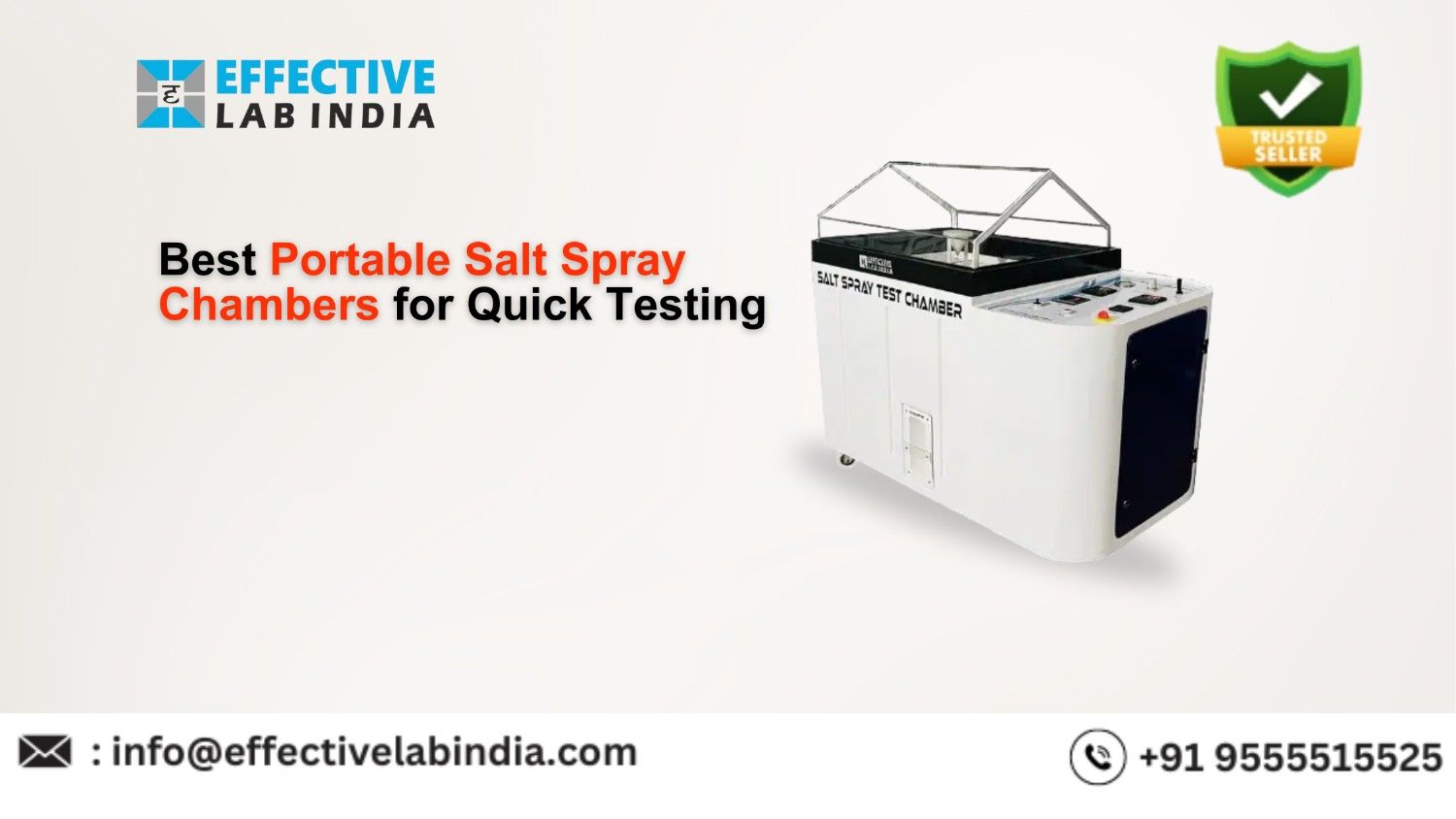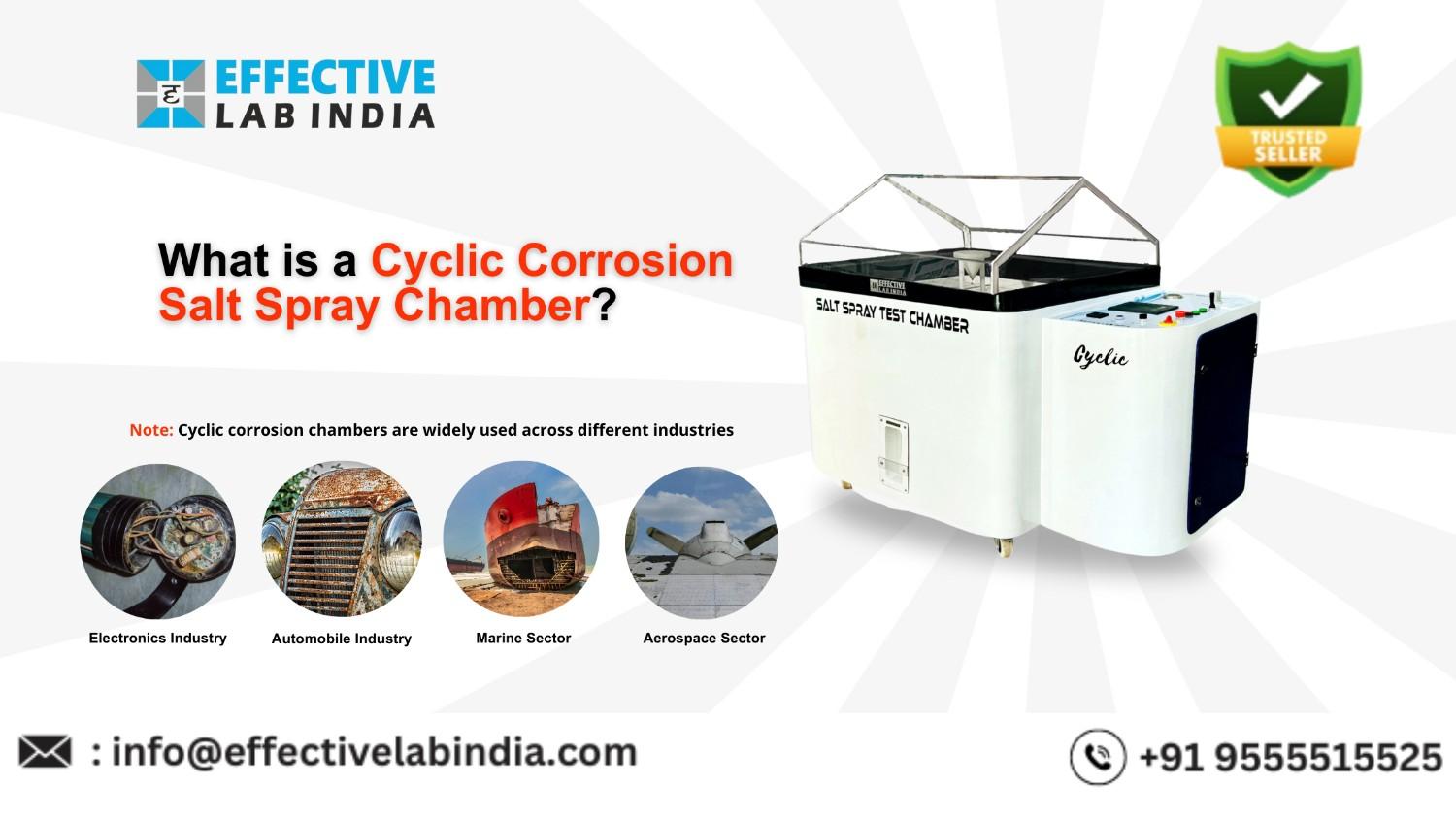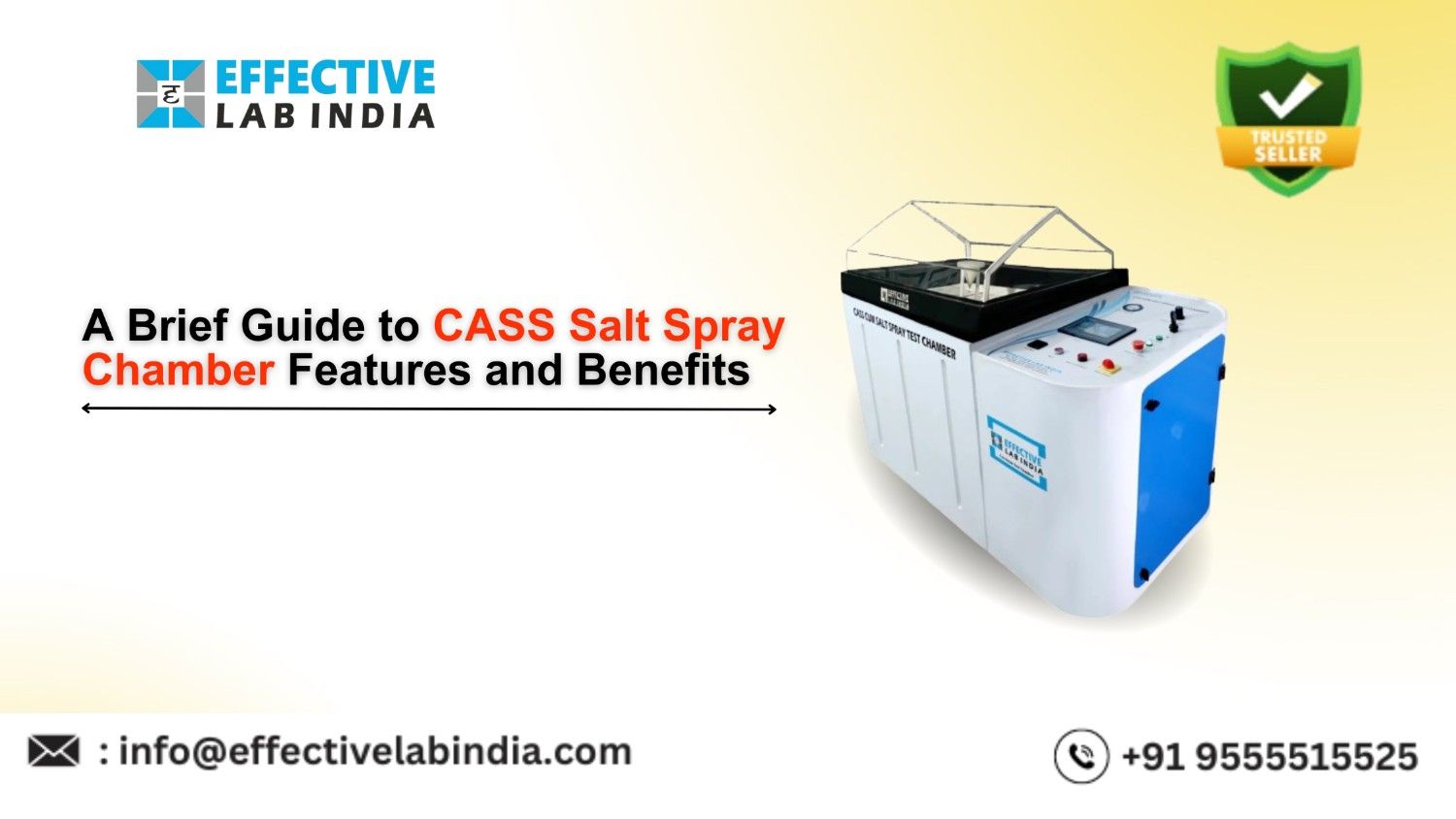What Is the Salt Spray Test’s Basic Principle?

Are you interested in learning the trick to making sure different products last a long time? If so, the key to this is the Effective Lab salt spray test chamber. This is a top-notch piece of lab equipment used by manufacturers to test materials’ resistance to rusting in salinity-filled environments. With a count of just 0.1°C, this is among the best laboratory testing apparatuses available. In-depth discussion of the underlying theory behind the Salt Spray Test, one of the most used tests in the industrial sector, is provided in this article.
A standardised technique for assessing the corrosion resistance of materials and surface coatings is the salt spray test, sometimes referred to as the salt fog test. Salt Spray Chamber is extensively used in the automotive, aerospace, and construction industries to guarantee the robustness and endurance of goods subjected to corrosive conditions. The fundamental idea behind the salt spray test is outlined in this comprehensive summary:
Key Components and Steps For Salt Spray Chamber
- Test Chamber:
- A salt spray chamber, also known as a fog chamber, is the primary equipment used in the test. It is designed to create a consistent and reproducible corrosive environment.
- The chamber is equipped with atomizing nozzles that generate a fine mist of saline solution.
- Saline Solution:
- The solution typically consists of 5% sodium chloride (NaCl) dissolved in distilled water, although different concentrations and additives can be used depending on specific standards and requirements.
- The solution is maintained at a pH range of 6.5 to 7.2 to simulate natural sea spray.
- Sample Preparation:
- Samples to be tested are cleaned, dried, and placed in the chamber. They are usually positioned at an angle to ensure uniform exposure to the salt mist.
- The samples can be metals, coated metals, or other materials.
- Exposure:
- The chamber is sealed, and the saline solution is atomized to create a fog that settles on the samples.
- The temperature inside the salt spray chamber is maintained around 35°C (95°F) to promote consistent corrosion conditions.
- The duration of the test varies depending on the requirements, ranging from a few hours to several weeks.
- Assessment:
- After the test period, samples are removed and analyzed for signs of corrosion, such as rust, pitting, blistering, or loss of adhesion in coatings.
- Various assessment criteria, including visual inspection and mechanical tests, are used to evaluate the extent of corrosion.
Fundamental Principle for Salt Spray Testing
The fundamental idea behind this test is that materials exposed to salt mist will experience oxidation or corrosion on their metal surfaces. The type of metal, the atmosphere, and the presence of finishes or coatings that provide protection all affect how intense this process is. Faster laboratory testing findings are made possible by the accurate assessment of materials’ corrosion resistance provided by the Effective Lab salt spray test tester.
Typically, a salt spray test involves placing samples within a chamber and exposing them to a fine mist of NaCl salt continuously for predetermined amounts of time at controlled intervals. You may readmore about using a Cass Cum Salt Spray Chamber to perform a salt spray test with ease.
The fundamental principle behind the salt spray test is to simulate a corrosive environment to evaluate the corrosion resistance of materials and coatings.
Here’s a more detailed breakdown:
- Simulating Harsh Conditions: The test exposes materials to a controlled corrosive environment, typically a saltwater mist, which accelerates the natural corrosion process that the materials would undergo in a real-world setting. This allows for a rapid assessment of their durability and performance.
- Salt Solution: A saline solution, usually a 5% sodium chloride (NaCl) solution, is atomized into a fine mist and sprayed into a closed testing chamber. The salt solution is chosen because it closely mimics the harsh conditions that materials might face in marine or coastal environments, or from road salt in winter conditions.
- Environmental Control: The temperature and humidity within the test chamber are carefully controlled to ensure consistent and repeatable results. Typical conditions are maintained at 35°C (95°F) with high humidity.
- Time-Accelerated Testing: By subjecting materials to continuous exposure to the salt spray, the test significantly accelerates the corrosion process. What might take months or years to occur in natural conditions can be observed in hours or days within the test chamber.
- Assessment and Evaluation: After exposure for a predetermined period, the materials are examined for signs of corrosion, such as rust, pitting, or deterioration of coatings. The extent and type of corrosion provide insight into the material’s or coating’s effectiveness at resisting corrosion.
Standards and Protocols
The salt spray test is governed by various international standards to ensure consistency and reliability. Some common standards include:
- ASTM B117 (Standard Practice for Operating Salt Spray (Fog) Apparatus)
- ISO 9227 (Corrosion Tests in Artificial Atmospheres – Salt Spray Tests)
- JIS Z 2371 (Japanese Industrial Standard for Salt Spray Testing)
When interpreting the findings of a salt spray test, it is also crucial to take into consideration any applicable standards or specifications. Standards pertaining to corrosion resistance may vary throughout industries, and these must to be considered when assessing test findings.
Conclusion:
Overall, the salt spray chamber is widely used for quality control and comparison of the corrosion resistance of different materials and protective coatings. It is a standardized test with protocols specified in standards like ASTM B117 and ISO 9227, ensuring consistent procedures across different testing scenarios.




